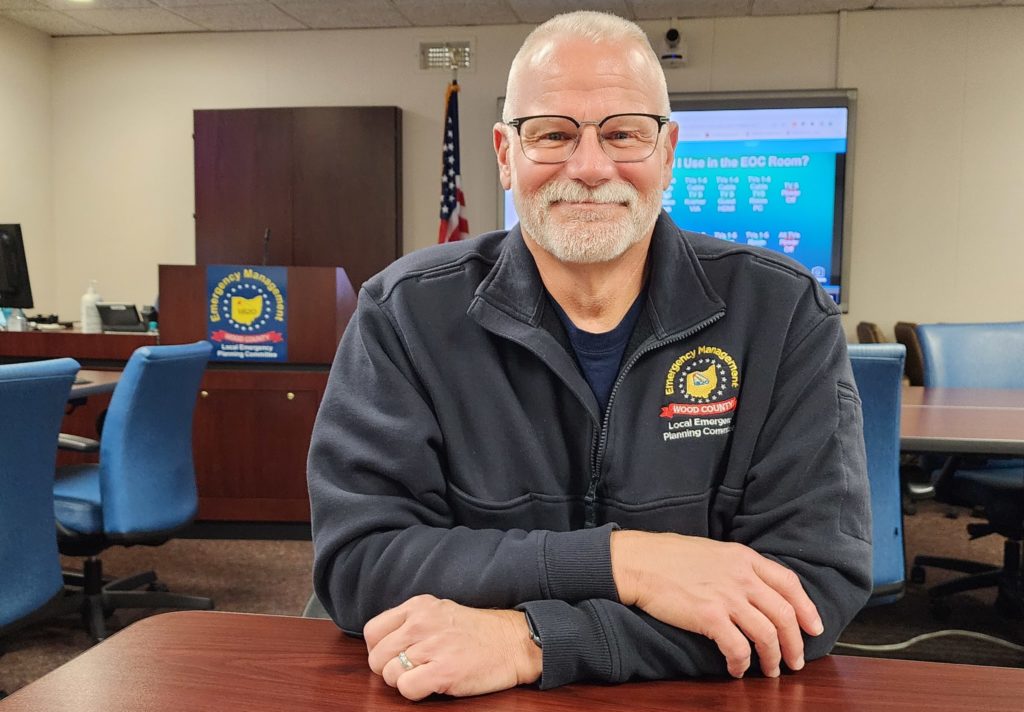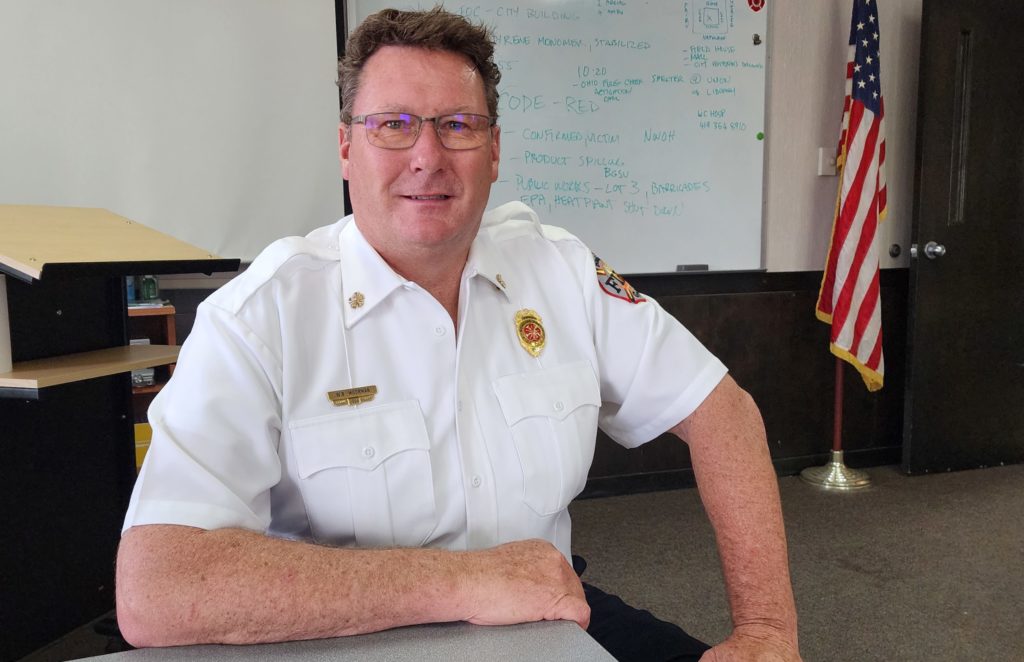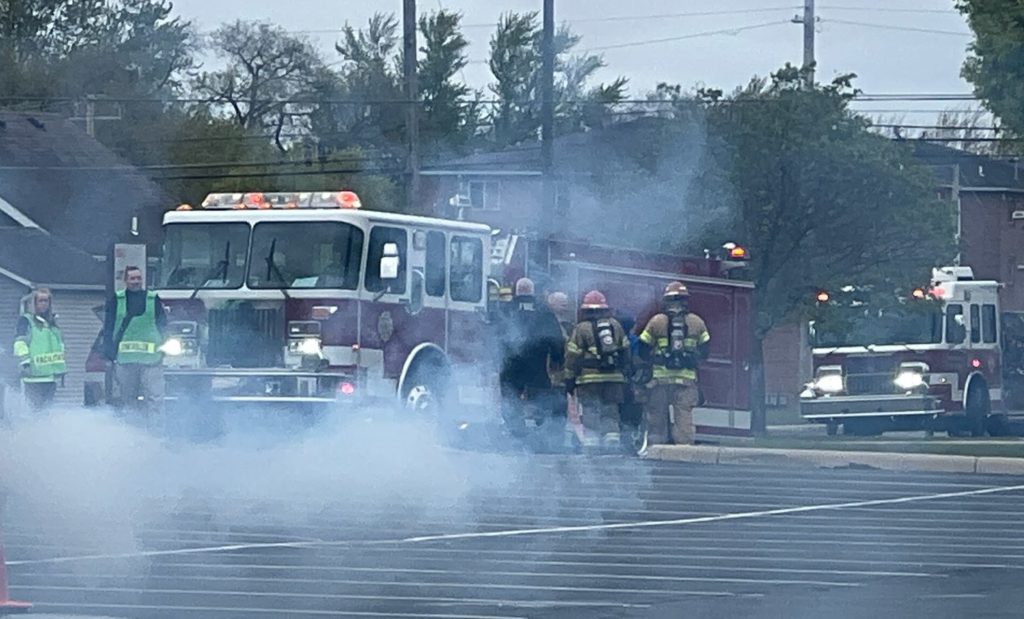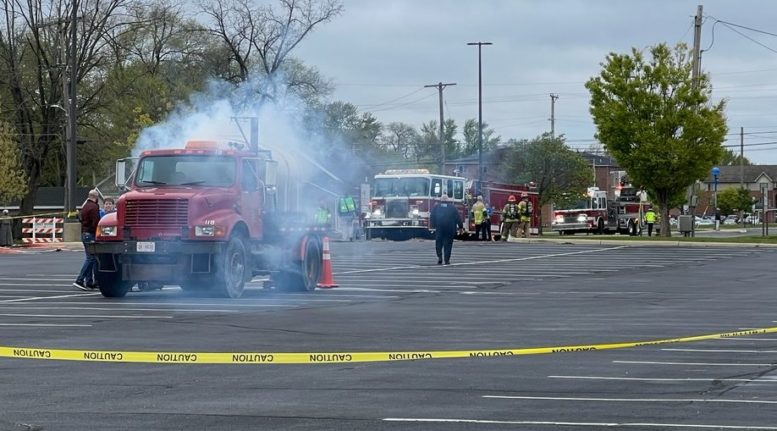By JAN LARSON McLAUGHLIN
BG Independent News
Three months after a trail derailment spilled hazardous materials in East Palestine, Ohio, that community is still reeling from the incident.
Wednesday morning in Bowling Green, more than 100 first responders showed up to train for a different type of potentially deadly rail incident.
The annual hazardous materials exercise was actually planned in advance of the East Palestine derailment. So the timing of the Wood County Local Emergency Planning Committee drill was perfect, according to Wood County Emergency Management Agency Director Jeff Klein.

“I hope that this reassures people here that the first responders here are really well trained,” Klein said following the exercise.
Bowling Green Fire Chief Bill Moorman spoke briefly about the response in East Palestine.
“Every emergency response could be handled better,” Moorman said. “We want to make mistakes on the training ground, not on an emergency scene. It was a good training to have.”
The scenario for Wednesday’s drill was based on an actual incident in the Cincinnati area in 2005. Rather than a derailment, the drill set the stage for a rail car carrying the chemical styrene, in which the stabilizer was old and the tank car began venting a deadly vapor.
When the first bystander call came in about the smell from the venting tanker, emergency responders began responding to a BGSU parking lot next to the CSX tracks that travel through town.
In addition to fire and police departments, there were personnel from the EPA, EMA, CSX Railroad, American Red Cross, PUCO, Wood County Hospital and the National Weather Service.
A leaking water tank from the Wood County Highway Garage simulated the rail car, and a smoke machine provided some realism to the scene.
A CSX employee played the role of the train engineer.
“He responded like a real train engineer would respond,” Klein said.
The NWS used the actual weather during the drill to advise first responders of where the hazardous material was being blown, when the winds shifted, and where people should be evacuated.
A “victim” with hot packs was hidden near the BGSU heating plant, to see if a drone from the Wood County Sheriff’s Office could locate it with the aid of its thermal camera. The drone was also used to map the beginning and end of the train, and identify any other problems on the tracks.

“Introducing new technology was great,” Moorman said of the drone.
An actual styrene leak would be “very challenging,” Klein said, explaining everyone within a half or full mile radius would have to be evacuated.
That would include the East Court Street fire station, right next to the tracks. Moorman said the equipment would all be sent over to the Pearl Street fire station.
“The last thing we need is all of our equipment to be contaminated,” Moorman said.
And the firefighters and other first responders would not be able to rush into the scene with hoses ready, as they are accustomed to doing. “They would have to stay back and figure it out,” Klein said.
“It comes down to training and discipline,” Moorman said of hazardous material responses. “You need to know what you are dealing with.”
The hospital tested its emergency response as well, with a patient being taken over to go through the decontamination process there.
“The last thing you want to do is bring in a patient who is contaminated,” the fire chief said.

Klein stressed that in hazardous material situations, the public needs to listen to local responders.
“We’re the people you need to listen to when this happens,” he said. “Once the rumors take off, you can’t reel them back in.”
Decisions would have to be made about facilities like schools, nursing homes, and industries being evacuated or locked down. Several city departments were also on hand for the exercise, and the Ohio Fire Chiefs Association response plan was put to the test to provide additional fire personnel.
“Everyone brings something to the table,” Moorman said.
After the exercise was completed, the first responders gathered at BGSU for a “hot wash” examining how the drill was handled. In this case, a responder from the actual styrene incident in Cincinnati was able to share his experience, Klein said.
“People learn from it,” Klein said.
“A lot of this is troubleshooting. No matter what the situation is, it’s never going to go as planned,” he said. “I think this just reinforces that we are prepared if something happens.”

